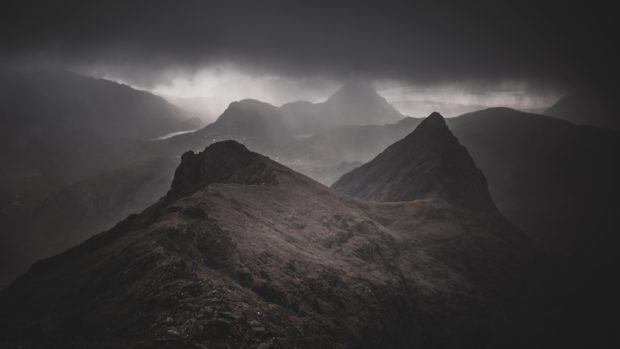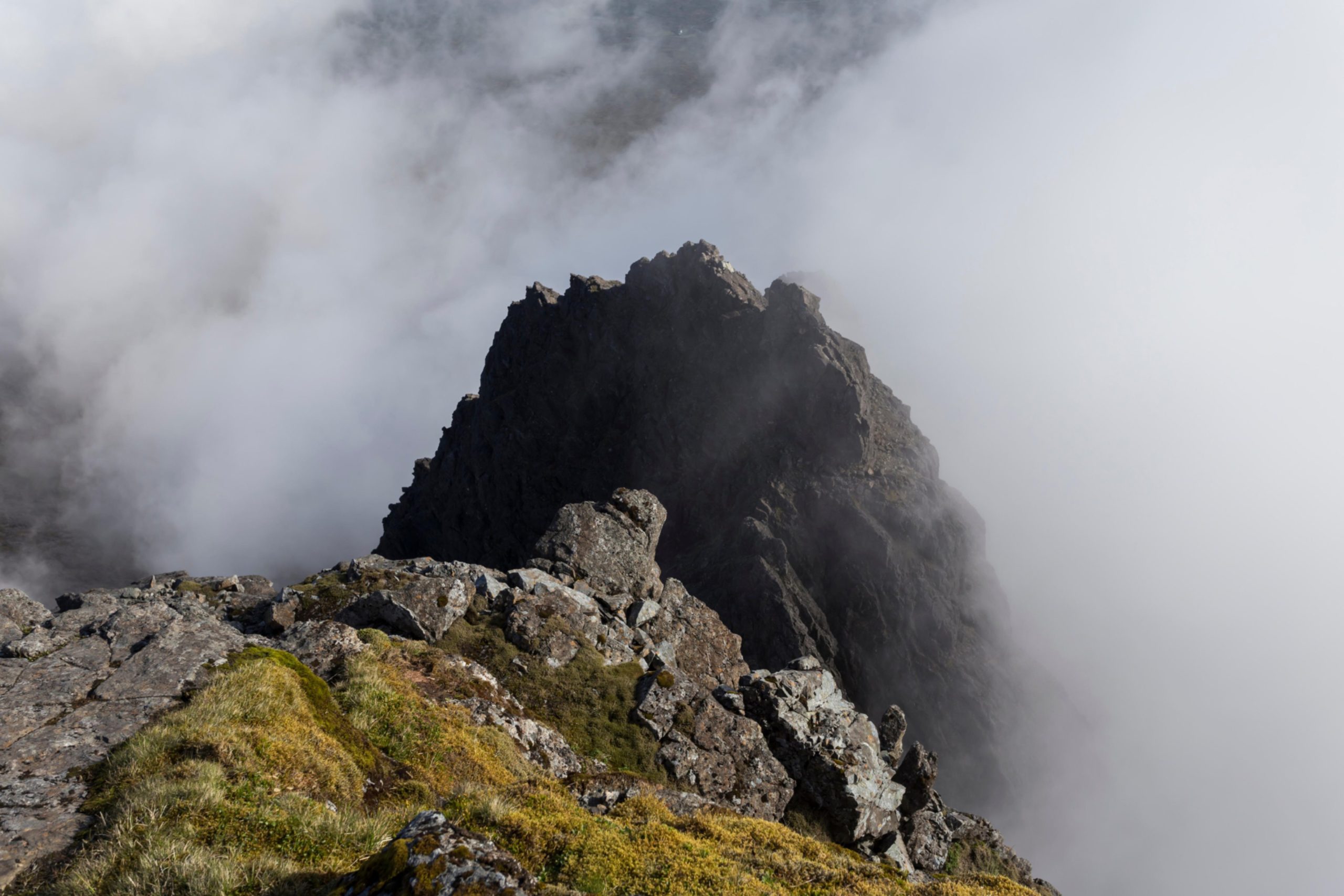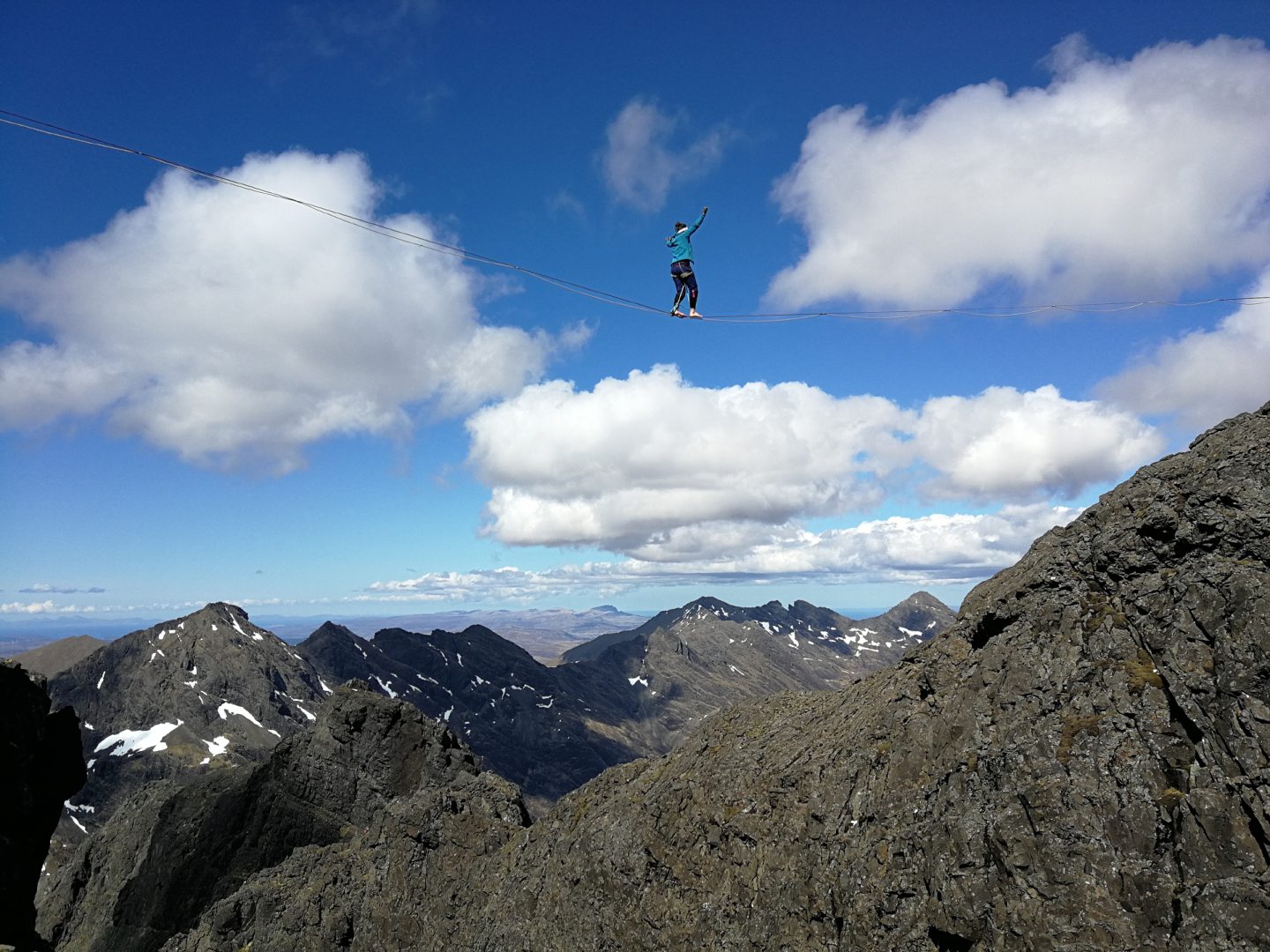
Black, ferocious and unyielding, the Cuillin mountain range on the Isle of Skye is well-documented as the toughest set of ridges on the British Isles.
Translated from Gaelic and Norse to ‘rocky height’ or ‘legendary warrior,’ the vast, rocky Cuillin have mystified, intrigued and enticed generations of explorers – with author, Simon Ingram dedicating an entire new book to the legendary peaks.
The Black Ridge: Amongst the Cuillin of Skye tracks and condenses the mystical history, atmosphere and experience of Skye’s dangerous and wild mountains and their unique place in British topography.
“The book started out as a sort of travel-history,” explained Ingram, the former editor of mountaineering publication, Trail Magazine.
“As time went on it grew limbs and spurs of its own as I realised how deep and peculiar the story of the Cuillin ridge runs, and the amount of mythology and history that gravitates to and from it.
“It’s such an atmospheric place, the Cuillin. I guess I felt there are plenty of very fine practical books dedicated to the ridge, that give you all the how-to nitty gritty.
“I wanted to write something that lingered a little more on the bits in between. The more intangible stuff.
“Like, if the ridge had a memory, what would that be like? What has it seen?”
11 kilometres long and above 3,000 feet in places, the Cuillin mountain ridge contains 11 Munros and 16 other summits.
As Ingram notes in his book, so difficult are the Cuillin to traverse, they are ‘very nearly off limits.’
Indeed, he didn’t muster up the courage to climb them himself until a little later in life, long after he’d trekked many of the world’s other dangerous summits.
“I put off climbing the Cuillin for years, but eventually had a ‘mid-mountian crisis,’ after I’d got married and had my children and finally succumbed,” he said.
“I considered, probably rightly, that the Cuillin was beyond my abilities, particularly as I’m not brilliant with really big exposure in the mountains.
“But the fascination stayed. And the more I learned about the Cuillin, the more I realised how much the influence of these mountains spread into the island, and vice versa, right back into history.
“And the ridge really is unique; everything about it flies in the face of what you might call normal of the British mountains, from its magnetic rock, to its weather, to its difficulty, its grippy/slippy makeup, to the sharpness of the summits.
“It’s a rule-breaker, and it’s hard not to be intrigued by that.”
He added: “Being in the mountains ignites something primitive inside you, and reconnects you with a simplicity and practicality a lot of us have forgotten how to engage with – and when you do, it’s very steadying.
“I’ve always been drawn to weird, dramatic mountains, too… nature’s more gothic efforts. Not through any burning desire to grapple with them necessarily, just to appreciate their presence.”
Although the Cuillin is now a heady attraction for mountaineers, the Alps and other UK mountains were summitted by explorers long before the Cuillin were even ‘discovered’ or climbed, due to romantic writers and travellers who “promoted the pleasingly dread-dripped and contagious idea that the Cuillin were unassailable.”
“As a result, these were the last mountains in the British Isles to be climbed,” said Ingram in The Black Ridge.
“At a time when most home-bred explorers were extending their reach to the far corners of the world in search of ever more ambitious objectives – Alps, Caucasus, Andes, Himalaya – here was a tight fist of virgin ground, terrifyingly tempting, just off the Scottish coast.
“But they were so formidable, that every summit on the UK mainland – as well as many in the Alps – was climbed before the first mountaineering feet trod on a Cuillin peak.
“They were so different from any other peak or mountain in Britain, scarier and trickier than anything else you would encounter.
“When walking in the Lake District or the Brecon Beacons you were strolling with the angels, but on the Cuillins, you were dancing with the devil.”
Anyone who has explored the Isle of Skye even for the shortest of visits will be aware of the island’s distinctive landscape, and how it differs greatly from the more low lying islands that surround it.
As explained in The Black Ridge, nowhere else in the UK are such immense mountains found.
This can be explained by the country’s highly complicated geological past, says Ingram, and how the earth below us is constantly shifting, moving and erupting.
“The Cuillin was formed around the time the dinosaurs died, around 60 million years ago,” he said.
“It is the result of a volcanic mantle plume, which broke the surface on Skye and built a great volcano, which lapsed into slumber and then was eroded away.
“The Cuillin are the guts of the volcano – the cooled, un-erupted magma. The glaciers of the last million years gave the ridge its current, craggy form.
“A lot of the more dramatic parts of the island are a volcanic carapace that’s kind of been weathered into these mad sculptures of mountain and rock. In that respect it does bear some character similarities, to Rum for instance.
“But combine this with the coastal aspect of Skye, and its size, separation and complexity as an island, and you conjure an atmosphere that does the rest.
“Give it another hundred million years it probably won’t be anywhere near as dramatic, so I’d go while you can.”
The Black Ridge by Simon Ingram, published by William Collins, available now.

Enjoy the convenience of having The Sunday Post delivered as a digital ePaper straight to your smartphone, tablet or computer.
Subscribe for only £5.49 a month and enjoy all the benefits of the printed paper as a digital replica.
Subscribe © Alamy Stock Photo
© Alamy Stock Photo © SYSTEM
© SYSTEM